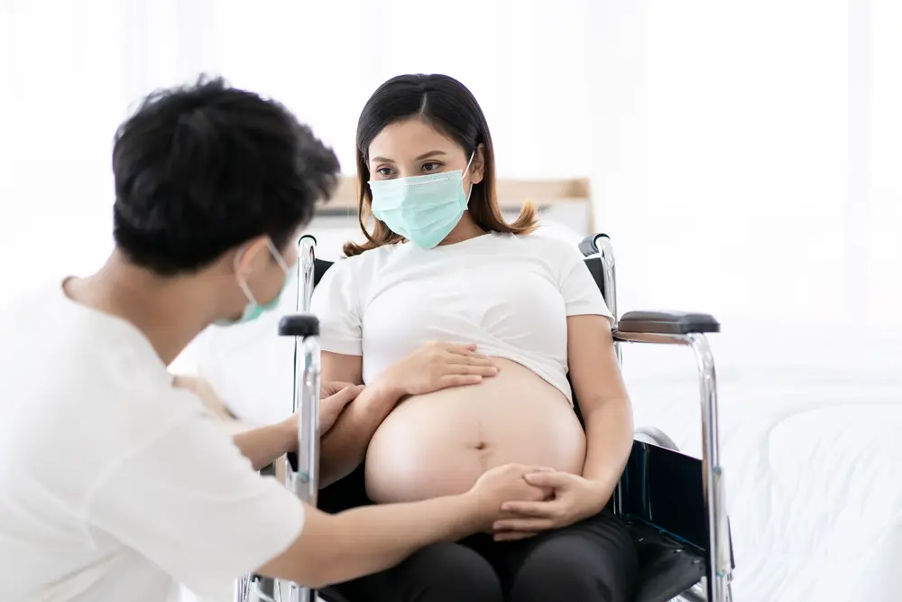Global Accessibility Awareness Day exists to focus on digital inclusion for those with different abilities. As the health services move to a more digital approach Gina Finnerty, Senior Lecturer Midwifery at the University of Greenwich, considers the significance for maternity services.
______________________________________________________________________________________________________________________________________________________________________
Global Accessibility Week: Scope for change in the maternity services?
The purpose of this article is to mark Global Accessibility Awareness Day which occurs every year in May. Over one billion people worldwide have some form of disability. What is global accessibility? The focus is on digital access and inclusion for anyone with a disability.
Types of disability include:
- Blindness
- Deafness or hearing impairment
- Physical disability
- Mental health challenges
- Speech and language disorders
- Learning and cognitive disorders
Definitions and terminology vary but the WHO Disability Model provides international classifications and a generic assessment tool (Ustun et al 2010). However, there is often confusion with terms. In my forty-year career in nursing and midwifery, I have cared for many people with the above disabilities. I also volunteered two evenings a week from the age of 14-16 in a Cheshire Home, caring for residents with quadriplegia and paraplegia. The experience was a baptism of fire as a teenager but excellent preparation for working in the NHS. I felt committed to regular volunteering as many residents were totally isolated and expressed deep gratitude. I learnt to provide dignity and respectful care through role modelling wonderful carers. Despite the visibility of the Equality, Diversity and Inclusion agenda, it is evident that inequity exists in all areas of health. Accessibility of digital information as well as adaptive and assistive technologies can only improve equity for those with disabilities.
One of the principles of the WHO Global Strategy (2016) is to; ‘provide integrated, people-centred health services devoid of stigma and discrimination and foster inclusiveness’ (p8). To achieve this, it is vital to harness the potential of technological innovation, for example, electronic health records, telemedicine and mobile health services. Huge strides in technology have been made in developed countries but it is estimated that only 5-15% of people in low and middle-income countries (LMICs) who need assistive technologies have access to them (Matter et al 2016). In a scoping review to explore access to, and experiences of maternity care for women with physical disabilities, all dimensions of access, for example, availability and acceptability, presented barriers to quality care.
The ‘Inclusion Hub’ is a website that has been developed specifically to address digital accessibility, inclusion and belonging. It is suggested that accessibility advocates are employed in businesses and are visible in teams. Web content accessibility guidelines should be available on websites and attention should be paid to graphics and text that are easily visible. This is necessary so that people with disabilities are able to work more easily, can participate fully and connect socially.
Mobile apps are increasing and available but not always fit for purpose for people with, for example, visual impairment. Touch screen technology has proved successful for people with motor disabilities. The immersive reader technology and platforms such as Skype, with a translator programme can assist with communication. Voice recognition software is available on some devices and the company, Apple, provides free assistive and adaptive technologies such as Apple voiceover. The computer screen can be magnified and controlled using a keyboard. Read aloud file content can be accessed and large print keyboards are available. Wearable technology is now increasing and smart pens can assist with speech and writing.
Accessibility for women and birthing people seeking maternity care are improving but disparate practices exist. Some excellent on-line tools exist for women with disabilities such as Best Beginnings: Baby Buddy App (www.bestbeginnings.org.uk). One minute guides provide excellent information for women with learning disabilities, produced in Leeds https://www.leeds.gov.uk/one-minute-guides. The British Institute for Learning Disabilities (BILD) has produced clear infographics related to creating ‘Capable Environments’. Unfortunately, very little relates to maternity care.
In conclusion, accessibility to digital tools is a human right. All women and birthing people who access maternity services deserve to have sensitive care which entails inclusion, fairness and dignity. In order to provide truly holistic care to people with any form of disability, policies need to be developed which promote continuity of care, tailored to women’s individual needs. More disability champions and specialist midwives are needed with a specific remit to improve accessibility for people with disabilities. Mandatory training for midwives could be more inclusive of disability. Increased disability training in the curriculum for student midwives and apprentices is necessary. This could include immersive simulation using virtual and augmented reality. Digital educational resource packs need to be developed which provide simple links to the range of digital tools and assistive and adaptive technologies available globally. This will help to create equal access and inclusion for all people with disabilities.
May 2023
Gina Finnerty RM, BEd, PhD
Senior Lecturer Midwifery
University of Greenwich


